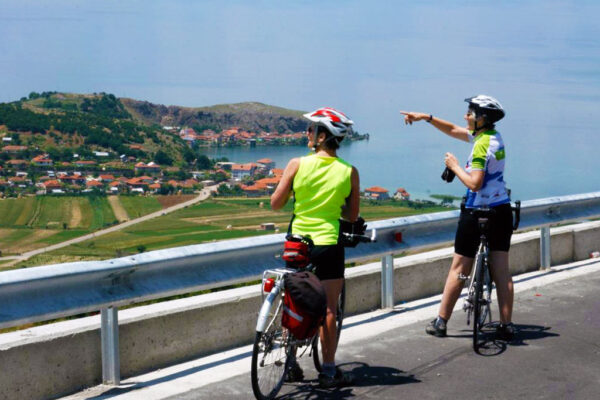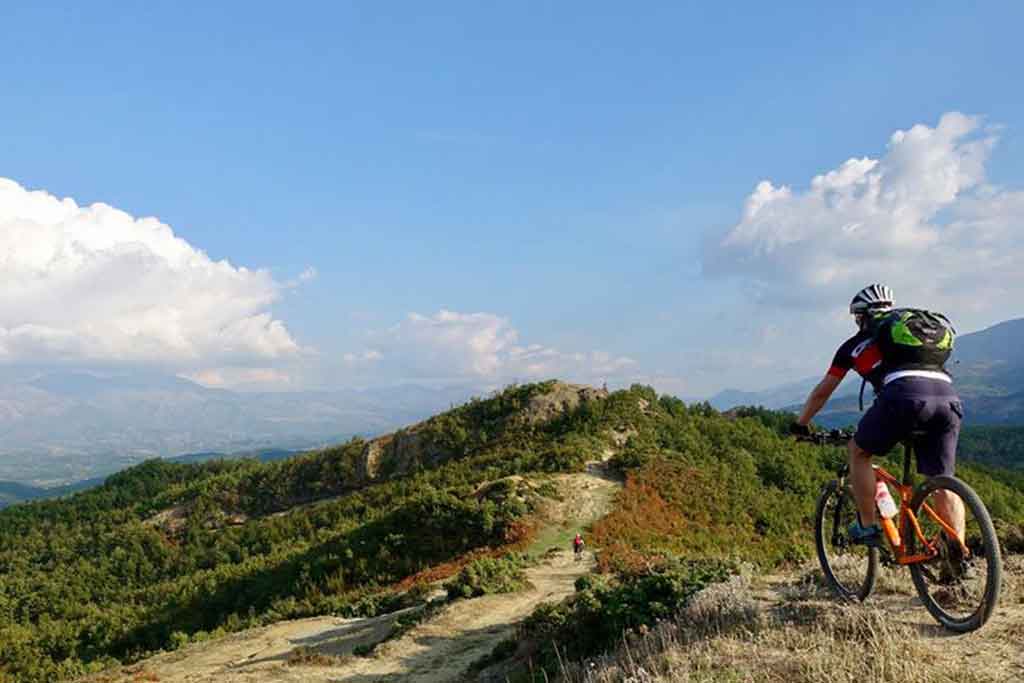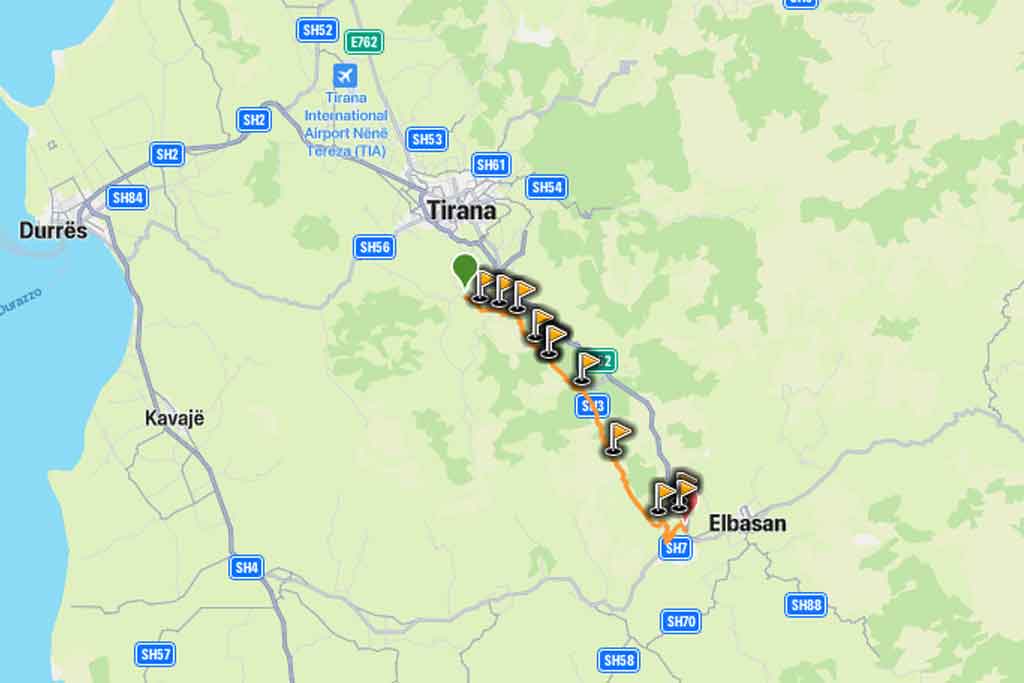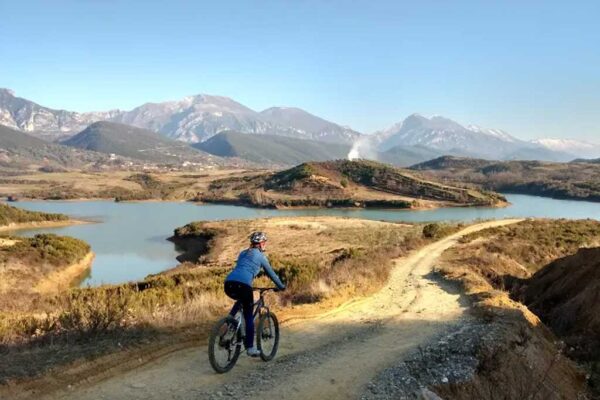


Average Reviews
Description
Starting on the outskirts of Tirana, this is a very picturesque journey about 30Km long.
Petrelë Castle is located in Petrelë, central Albania. Its history dates back toByzantinian Emperor Justinian I. Petrelë Castle is 329 metres above sea level.
It is one of the tourist locations close to Tirana that attracts a great number of visitors. The castle, and the prominent wooden structure (which is now a restaurant), is perched on a rocky hill. It has a triangular shape with two observation towers.
The Petrela Castle was part of the signaling and defense system of Krujë Castle. The castles signaled to each other by means of fires. During Skanderbeg’s fight against the Ottomans, the Petrela Castle used to be under the command of MamicaKastrioti, Skanderbeg’s sister. The castle site has views of the Erzen valley, the hills, olive groves, and surrounding mountains.
– Persqopi Castle Ruins, the city of Brysak
The ancient city is located on the side of the mountain of Villa, which is the last highest peak of the Krraba mountain range (590 m altitude). Its strategic position made it possible to control a vast territory and the roads passing through these areas.
Persqopi belongs to the period that includes the second half of the IV century BC.
It has an extension of about 60m in length and a height of 7m with 10 rows of stones.
In addition to the ancient walls, in Persqop are preserved numerous traces of dwellings, as well as traces of a tomb and a water supply system that was supplied with water from Mount Villa.
– Monumental tomb of Persqopis located in the eastern part of the Villa Mountain. It is part of the settlement known as “Ancient walls and tomb of Persqop”, on Mount Petrela. Perscopi was one of the ancient cities that was not reused for long. It is thought that the population moved and settled in Petrela.
– Gracen Tower isa cultural heritage monument in Gracen, Elbasan district, in the district of Elbasan, Albania.
– Saint Gjon Vladimir’s Church is a monastery, a cultural heritage monument in Shijon, in the district of Elbasan, Albania. It was rebuilt by Karl Topia, on the ruins of an older church and became 4 times larger, as appears from the inscriptions. There are three inscriptions: Latin, Greek and Slavic, with rough content, where it is said that Karl Topia, the king of the Albanians, made the monastery for his glory.
During the 18th century KostandinShpataraku painted the walls of the church. This monastery is one of the largest ecclesiastical cultural centers in Albania. It is a very important historical monument of the Albanian Middle Ages. On the walls there are some sculptures and ornaments earlier than the century. XIV, later inscriptions, as well as has been the masterfully carved portal that has been taken and mounted in the National Historical Museum.
Photos
Map
Categories
Statistic
Related Listings



